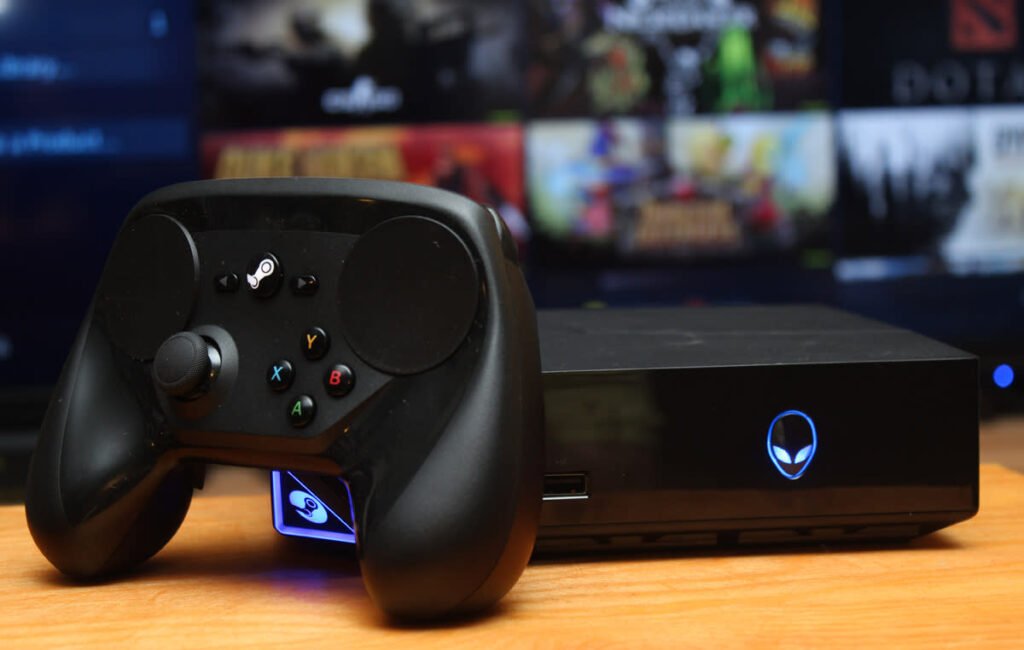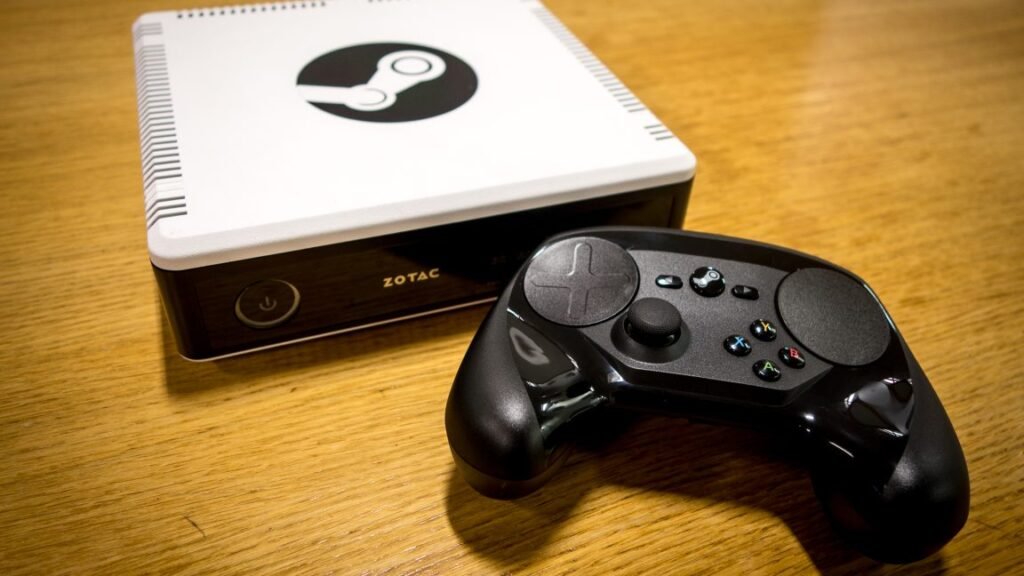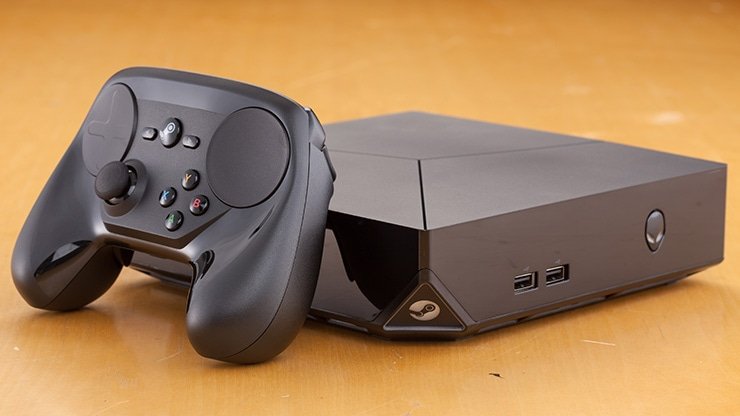Overview Table
| Aspect | Details |
|---|---|
| Concept Name | Steam Machine Gaming |
| Developer | Valve Corporation |
| Core Idea | A hybrid platform combining the power of PC gaming with the simplicity of a console |
| Operating System | SteamOS (Linux-based system optimized for gaming) |
| Launch Period | Officially announced in 2013; released in 2015 |
| Primary Hardware Partners | Alienware, ASUS, Zotac, Gigabyte, Origin PC, Maingear |
| Input Device | Steam Controller |
| Key Advantage | Brings PC gaming into the living room; console-like experience with Steam’s massive library |
| Target Audience | Gamers seeking console comfort with PC flexibility |
| Legacy | Paved the way for devices like Steam Deck and modern hybrid gaming PCs |
| Power Word Summary | Innovation, Freedom, Customization, Revolution |
1. Introduction: The Vision That Bridged Two Worlds
When Valve Corporation first announced the concept of Steam Machine Gaming, the gaming world was buzzing with curiosity and anticipation.
For years, PC gaming and console gaming existed as two distinct ecosystems — one praised for power and customization, the other celebrated for comfort and simplicity.
Valve envisioned a future where both worlds could merge — where the freedom of a PC could exist inside the elegant, plug-and-play convenience of a console.
The Steam Machine was not just hardware; it was a revolution in philosophy. It aimed to redefine how gamers played, interacted, and owned their experiences.
It was a powerful experiment — one that would influence the direction of gaming for the next decade.
2. The Birth of the Idea: Why Valve Created Steam Machines
By the early 2010s, Steam had become the dominant platform for digital PC gaming. Millions of players used it daily, and its library contained thousands of titles.
But one problem persisted — PC gaming was tied to desks, monitors, and the complexity of configurations.
Console players enjoyed their games in the living room with controllers and simple interfaces. Valve saw an opportunity — to bring PC gaming to the couch, combining Steam’s library with console-style accessibility.
Thus, Steam Machine Gaming were born — compact gaming PCs running a new operating system called SteamOS, optimized for controller-based navigation and living-room play.
The idea was simple but visionary:
“Your Steam Library, your way, anywhere in your home.”

3. What Is a Steam Machine?
A Steam Machine was a custom-built PC certified by Valve to run SteamOS and deliver a console-like experience.
Unlike traditional gaming PCs, Steam Machine Gaming were designed for simplicity — pre-built, optimized, and ready to play.
They varied in specifications, from affordable options for casual gamers to high-end systems for enthusiasts.
But every Steam Machine shared a common purpose — seamless access to Steam’s massive game library through an interface designed for televisions and controllers.
Essentially, it was a console with the soul of a PC — upgradeable, flexible, and open, yet accessible to the average player.
4. SteamOS: The Heart of the Steam Machine
At the core of the Steam Machine ecosystem was SteamOS — a Linux-based operating system developed by Valve.
It was designed to be lightweight, fast, and gamer-focused.
The interface was built around Big Picture Mode, allowing users to browse, install, and launch games using the Steam Controller or a compatible gamepad.
SteamOS offered:
- Native Linux game support
- Direct streaming from Windows PCs
- Open-source flexibility
- Multimedia functionality for music, movies, and apps
It represented a philosophical shift — an open, non-proprietary gaming OS free from corporate restrictions.
Even though it had limitations early on, it laid the groundwork for modern Linux gaming and future innovations like Steam Deck’s SteamOS 3.0.
5. Hardware Design and Customization
Steam Machine Gaming came in many shapes and sizes.
Valve didn’t build them directly — instead, it partnered with leading manufacturers like Alienware, ASUS, Zotac, Origin PC, and Gigabyte.
Each partner designed their own version, creating a range of models:
- Compact Living Room Consoles (e.g., Alienware Steam Machine)
- Mid-Range Systems for performance gamers
- High-End Machines with top-tier GPUs and storage for enthusiasts
The brilliance lay in freedom of choice.
Unlike traditional consoles, gamers could upgrade components, swap GPUs, add SSDs, or even install Windows alongside SteamOS.
This open-ended design made Steam Machine Gaming a symbol of customization and creativity — appealing to gamers who valued both performance and control.
6. The Steam Controller: Innovation at Your Fingertips
To complement the Steam Machine, Valve designed the Steam Controller — one of the most unique input devices in gaming history.
It replaced traditional analog sticks with dual touchpads, allowing mouse-like precision in games that weren’t designed for controllers.
Its features included:
- Haptic feedback for tactile sensations
- Gyroscopic aiming
- Configurable buttons and layouts
- Full customization for every game
The Steam Controller bridged the gap between keyboard precision and console comfort, embodying Valve’s commitment to innovation.
While it received mixed reviews, it paved the way for adaptive controller systems now used across platforms.
7. The Launch: Hype, Hope, and Reality
When Steam Machine Gaming officially launched in 2015, expectations were sky-high.
Gamers hoped it would end the rivalry between PC and consoles, offering the best of both worlds.
Dozens of models hit the market, ranging from budget-friendly $400 units to premium systems over $2,000.
However, the reception was mixed.
While the idea was brilliant, several challenges emerged:
- Limited Linux game library
- Confusion over multiple models
- Price overlap with existing gaming PCs
- Competition from PlayStation and Xbox
Despite its struggles, the Steam Machine concept planted seeds of innovation that would grow in unexpected ways.
8. Challenges and Setbacks
Every revolutionary idea faces obstacles, and Steam Machine Gaming were no exception.
The biggest challenge was software compatibility — most PC games were built for Windows, not Linux.
Though Valve supported Steam Play and later Proton (a compatibility layer), back then, the ecosystem was still developing.
This limited the initial game selection and discouraged some early adopters.
Additionally, many players were confused about pricing and performance differences among models.
Without a unified identity, the Steam Machine struggled to establish itself against established consoles.
But instead of abandoning the project, Valve learned from it — using every failure as a stepping stone for future innovations.
9. The Legacy of the Steam Machine
While commercially modest, the Steam Machine project changed the trajectory of gaming technology.
It inspired the rise of Linux gaming, open-source graphics drivers, and cross-platform optimization.
Even more importantly, it led directly to the creation of the Steam Deck — Valve’s portable gaming console launched in 2022.
The Steam Deck inherited the best ideas of the Steam Machine:
- Linux-based SteamOS
- Controller-first interface
- PC-level customization
- Portable, console-like usability
In retrospect, Steam Machine Gaming were not a failure — they were a prototype for the future.
Their DNA lives on in the Steam Deck, cloud gaming, and the push toward open PC-console ecosystems.
10. 10 Powerful Reasons Steam Machine Gaming Redefined Gaming
Let’s break down why Steam Machine gaming remains a pivotal innovation:
1. Open Platform Freedom
Gamers could modify software, upgrade hardware, and install any OS — true freedom in an age of restrictions.
2. Console-Like Simplicity
Plug it into a TV, grab a controller, and start gaming instantly — no messy setups.
3. Huge Steam Library
Access to thousands of games, sales, mods, and indie titles — an ecosystem unmatched by consoles.
4. Innovative Input Design
The Steam Controller revolutionized precision gaming from the couch.
5. Living Room Gaming Experience
PC-quality gaming in a console form factor — comfortable, social, and cinematic.
6. Customization and Scalability
From budget builds to 4K monsters, every gamer had a choice tailored to their needs.
7. Pioneering Linux Gaming
SteamOS paved the way for Linux gaming advancements, improving accessibility and performance.
8. Cross-Platform Integration
You could stream games from your main PC to your Steam Machine, blurring device boundaries.
9. Hardware Collaboration
Valve’s partnership model inspired flexibility in design — a move later echoed by brands like ASUS ROG and MSI.
10. Foundation for Future Tech
Steam Deck, cloud streaming, and hybrid gaming PCs all trace their lineage to the Steam Machine project.
11. Steam Machine Gaming vs Consoles: A Comparative Look
| Feature | Steam Machine | Traditional Consoles |
|---|---|---|
| Operating System | SteamOS (Linux-based) | Proprietary OS (Sony, Microsoft) |
| Customization | Fully upgradeable | Limited or none |
| Game Library | Steam’s full catalog | Platform-exclusive |
| Performance Range | Variable (configurable) | Fixed specifications |
| Price Range | Flexible (budget to high-end) | Fixed retail pricing |
| Mod Support | Yes | Very limited |
| Streaming Options | Yes (Steam In-Home Streaming) | Limited |
| System Openness | Fully open-source | Closed ecosystems |
Steam Machine Gaming didn’t aim to replace consoles — they aimed to liberate gamers from limitations.
They invited players to own their experience, not just rent it.

12. How Steam Machine Gaming Changed Game Development
SteamOS encouraged developers to port their titles to Linux, improving cross-platform development practices.
Indie studios benefited most — as Valve’s open tools reduced publishing barriers.
Today, many AAA games are optimized for Linux/Proton, allowing seamless play across devices like Steam Deck, SteamOS PCs, and cloud systems.
In this way, the Steam Machine quietly revolutionized the backend of gaming — empowering developers as much as players.
13. The Cultural Impact: Freedom as Philosophy
Steam Machine Gaming weren’t just hardware — they represented a mindset.
They questioned the dominance of closed platforms and championed gamer autonomy.
Valve’s decision to embrace open-source systems rather than proprietary locks was a bold cultural statement.
It encouraged players to think of gaming as an ecosystem, not an enclosure.
Even if they didn’t dominate sales charts, their cultural influence was profound — inspiring the next generation of gaming innovators.
14. The Resurgence of the Idea
Years after Steam Machine Gaming faded from retail shelves, their spirit returned in the form of hybrid gaming devices.
The Steam Deck, ASUS ROG Ally, Lenovo Legion Go, and other handheld PCs all borrow from the Steam Machine’s DNA.
These devices reflect Valve’s original dream — portable, flexible, console-like PC gaming.
Steam Machine Gaming were simply ahead of their time — the world wasn’t ready for them yet.
Now, with technology catching up, their vision has found new life in modern form factors.
15. Lessons Learned from Steam Machines
Valve’s journey with Steam Machines offers key takeaways for the tech industry:
- Innovation needs patience — not every idea finds instant success.
- Open systems inspire longevity — flexibility keeps ecosystems relevant.
- User experience beats specs — comfort and simplicity matter most.
- Failure can be a foundation — each setback fuels future breakthroughs.
In essence, Steam Machine Gaming taught the gaming world to dream bigger, fail faster, and evolve smarter.
16. The Future of SteamOS and Linux Gaming
SteamOS continues to evolve as the foundation of Steam Deck and next-gen devices.
With tools like Proton, gamers can now play thousands of Windows games on Linux seamlessly — something that began with Steam Machine Gaming.
This opens doors to a future without platform barriers, where gaming is unified by choice, not restriction.
SteamOS 3.0 is now optimized for handhelds, desktops, and consoles alike — a testament to Valve’s long-term vision.
17. The Rise of Hybrid Gaming Ecosystems
Steam Machine gaming laid the groundwork for hybrid ecosystems — where devices, platforms, and experiences merge.
You can now start a game on PC, continue it on a handheld, and stream it to your TV — all through Steam Cloud.
This continuity of experience is exactly what Valve imagined years ago.
The lines between PC and console have blurred forever — and Steam Machine Gaming were the spark that ignited that transformation.
18. Gamer Empowerment: The True Victory
At its heart, the Steam Machine movement was about empowerment.
It gave control back to gamers — control over hardware, software, and freedom of play.
It was a message:
“You don’t have to choose between power and simplicity. You can have both.”
This empowerment philosophy has reshaped gaming expectations, influencing how consumers view devices and digital ownership today.
19. The Continuing Legacy
Though discontinued, Steam Machine Gaming live on in:
- Steam Deck’s architecture
- Proton and Steam Play technologies
- Cross-platform design philosophies
- Open gaming ecosystems
They remain a symbol of bold experimentation — a reminder that innovation often begins with risk, not certainty.
20. Conclusion: The Revolution That Never Died
Steam Machine gaming wasn’t a failure — it was a prototype for progress.
It reimagined what gaming could be — open, personalized, and boundary-free.
While its commercial run was short, its influence echoes across every hybrid gaming device and open-source platform today.
In many ways, Steam Machines achieved their purpose — they shifted the culture of gaming from closed systems to open experiences.
And though the name may have faded, the revolution it sparked still thrives — powering a new generation of gamers who value freedom, flexibility, and creativity.
Steam Machine gaming will always be remembered as the bold idea that changed gaming forever — even before the world realized it.

